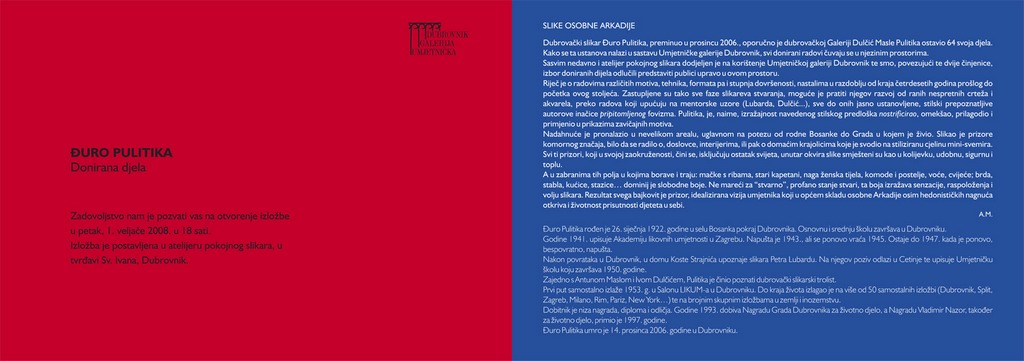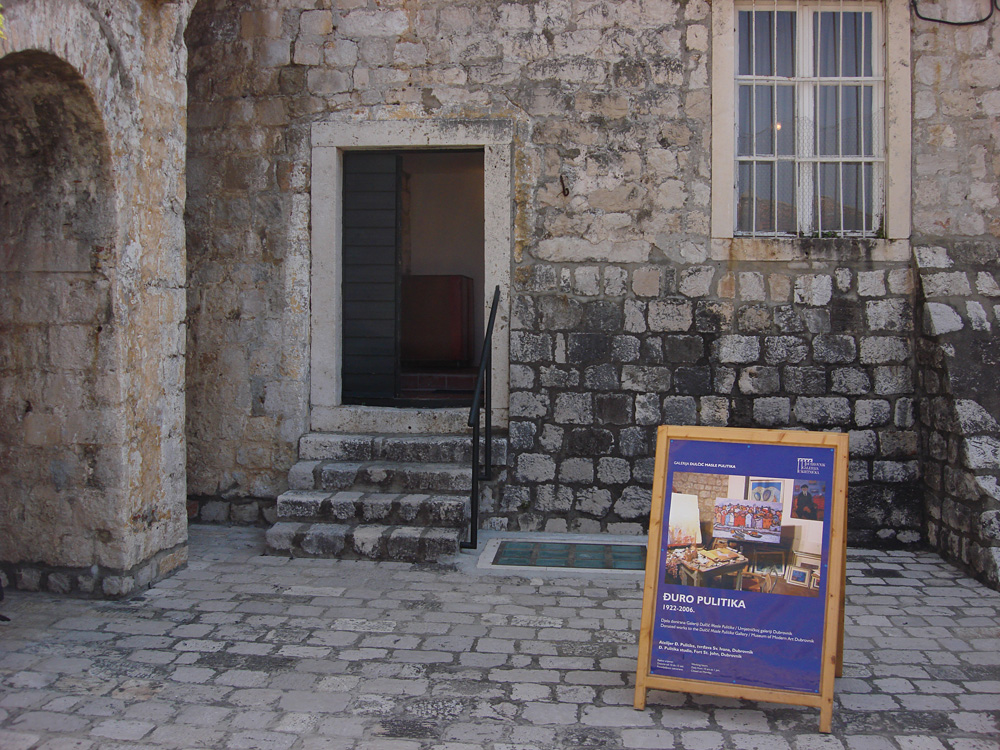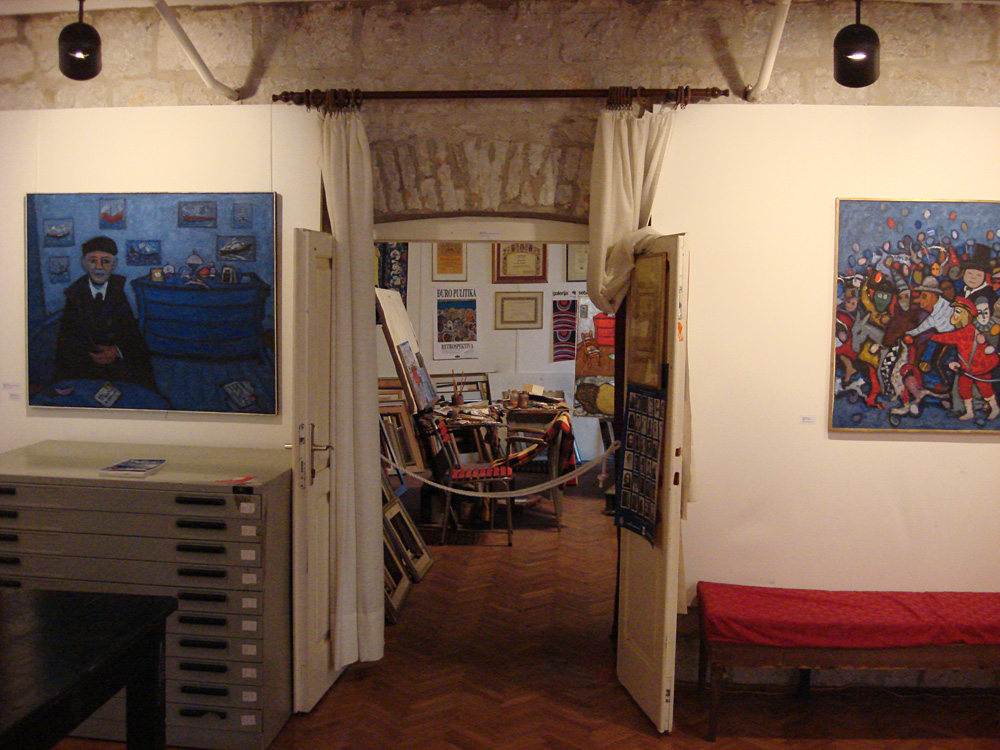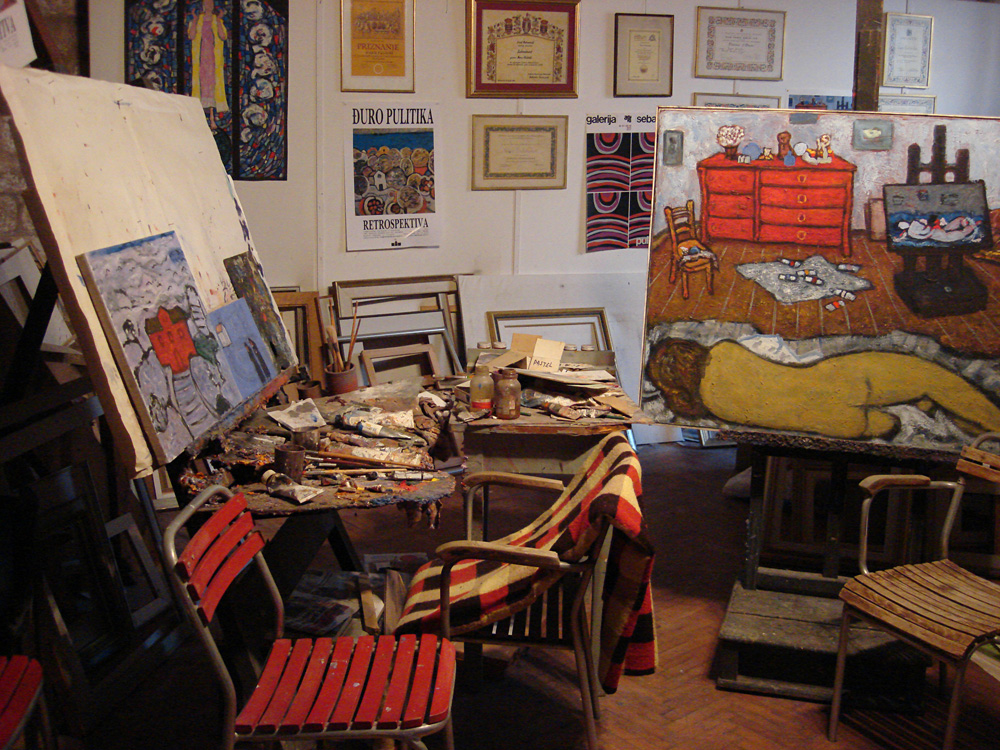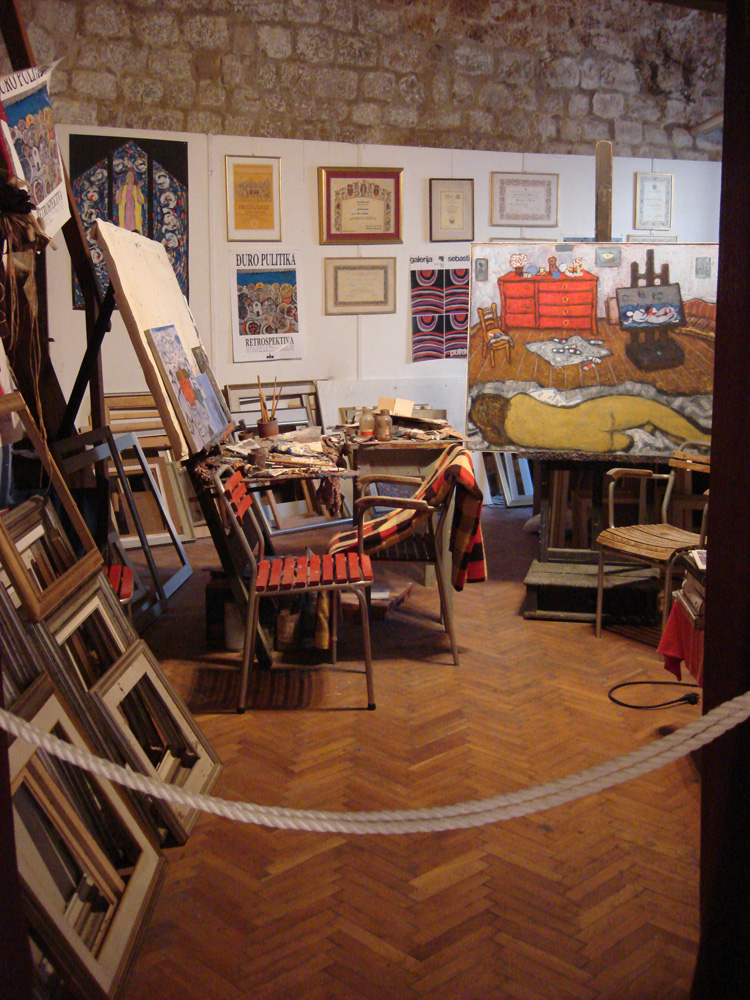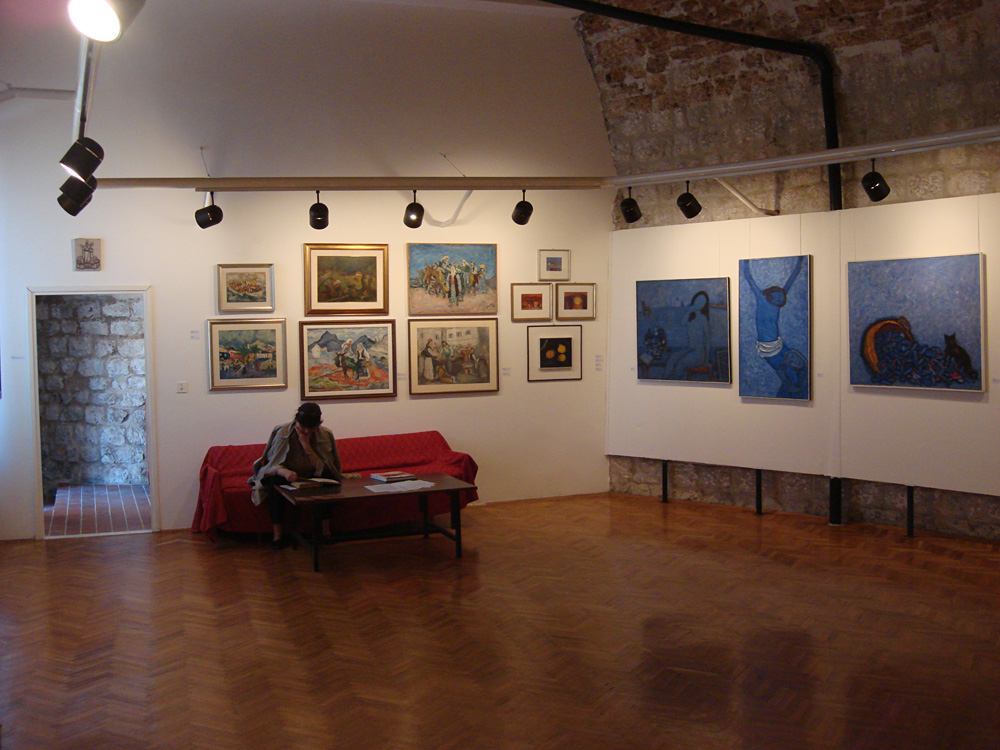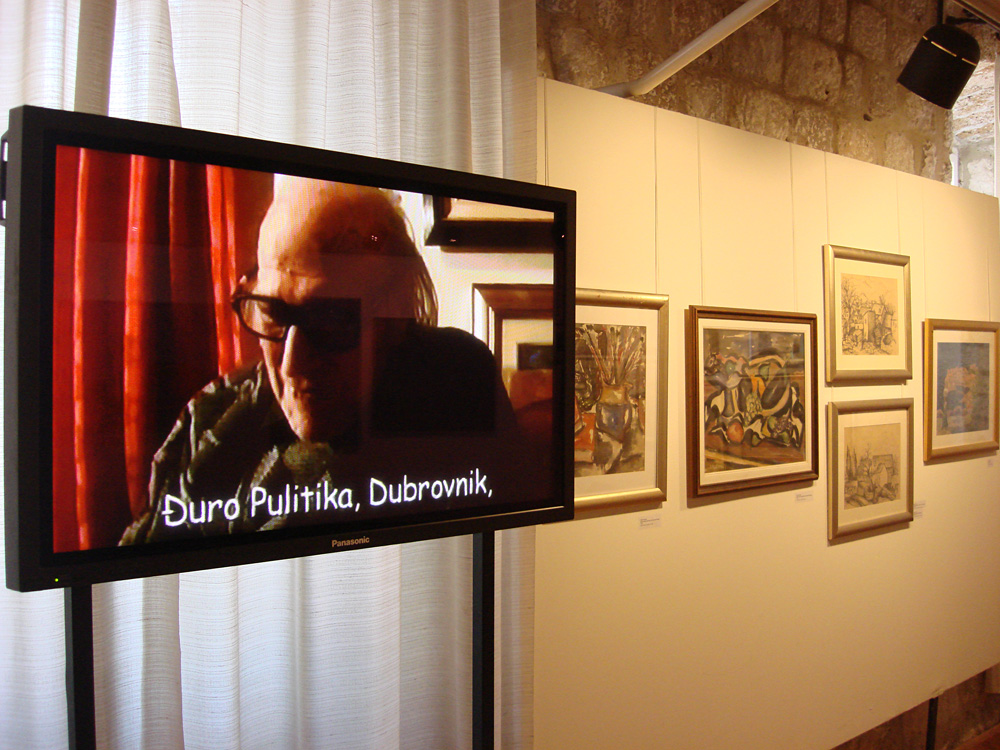EXHIBITIONS · Studio Pulitika
Studio Pulitika belongs to the Museum of Modern Art Dubrovnik since the beginning of 2008
The exhibition was opened in February 2008
PAINTINGS OF A PERSONAL ARCADIA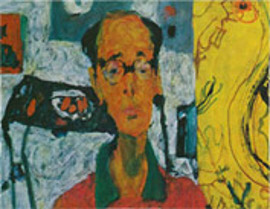 Dubrovnik painter Đuro Pulitika, who died in December 2006, willed to the Museum of Modern Art, Dubrovnik, one of his work and the Dulčić-Masle-Pulitika Gallery 64 of his artworks. Since this establishment is actually a part of the Museum of Modern Art, all the donated works are kept in its premises. And a very short time ago, the Museum of Modern Art, Dubrovnik, was given the use of the studio of the departed painter. Thus, putting these two facts together, we decided to present to the public a selection of these donated works in this space.
Dubrovnik painter Đuro Pulitika, who died in December 2006, willed to the Museum of Modern Art, Dubrovnik, one of his work and the Dulčić-Masle-Pulitika Gallery 64 of his artworks. Since this establishment is actually a part of the Museum of Modern Art, all the donated works are kept in its premises. And a very short time ago, the Museum of Modern Art, Dubrovnik, was given the use of the studio of the departed painter. Thus, putting these two facts together, we decided to present to the public a selection of these donated works in this space.
These are works with different subjects, techniques, formats and even degrees of completion, created in the period from the end of the 1930s to the beginning of this century. Thus all phases of the painter’s creative work are represented, and it is possible to trace his development from the early awkward drawings and watercolours via the works that suggest the influence of his mentors (Lubarda and Dulčić) all the way to those with the already clearly established, stylistically identifiable Pulitika version of domesticated Fauvism. Pulitika, that is, made the expressiveness of this stylistic model at home here, softened it, adapted it and employed it in the depictions of local motifs.
He found his inspiration over a not very large range, mainly in the stretch between his native Bosanka and the Dubrovnik in which he lived. He painted scenes on a chamber scale, whether to do with, literally, interiors, or of the local landscapes that he reduced to the stylised unit of a mini-universe. All these scenes in their self-sufficient roundedness, it seems, rule out the rest of the world, are located within the frame of the picture as if in a cradle, comfortable, safe and warm.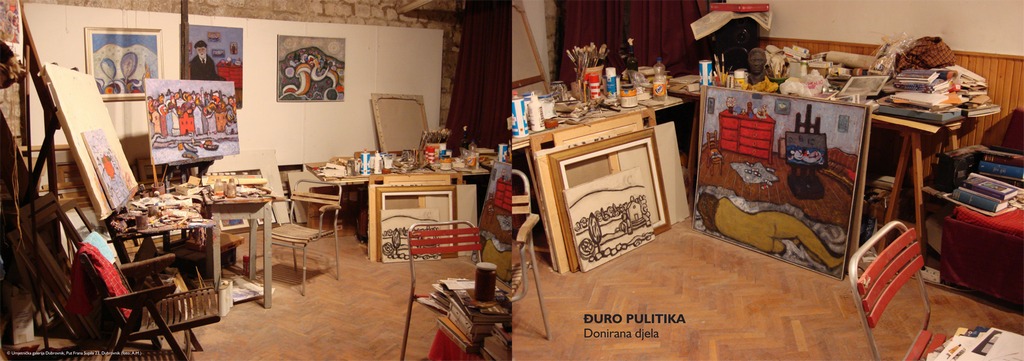
And in the enclosures of these fields in which live and last cats and fish, old captains, a figure of Christ, naked female bodies, cupboards and beds, fruit, flowers, hills, trees, cottages and paths lies the dominion of free colour. Not caring for the real, the profane state of affairs, this colour expresses the sensations, the moods and the will of the painter. The result of all is a fairytale scene, an idealised vision of an artist who in the universal harmony of his personal Arcadia discovered, as well as his hedonistic drives, the vitality of the presence of the child in himself. (A.M.)
Đuro Pulitika was born on February 26, 1922, in the village of Bosanka by Dubrovnik. He attended both elementary and high school in Dubrovnik. In 1941, he enrolled in the Academy of Fine Arts in Zagreb. He stayed there until 1943, and then went back between 1945 and 1947, after which he left it permanently. After his return to Dubrovnik, in the home of Kosta Strajnić he met Petar Lubarda. At his invitation, he went to Cetinje and enrolled in the Art School, a course which he completed in 1950. He, Antun Masle and Ivo Dulčić together made up the celebrated “Dubrovnik three”. He had his first solo show in the LIKUM Salon in Dubrovnik in 1953. By the end of his life he had exhibited at more than 50 individual (in Dubrovnik, Split, Zagreb, Milan, Rome, Paris and New York) and many collective exhibitions at home and abroad. He was awarded many prizes, diplomas and decorations. In 1993 he won the City of Dubrovnik Prize for Lifetime Achievement, and in 1997 the Vladimir Nazor Lifetime Achievement Prize.
Đuro Pulitika died on December 14, 2006, in Dubrovnik.
